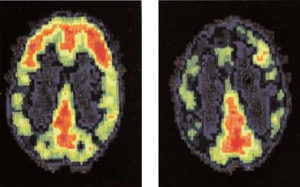Psychology Of A Serial Killer

(Photo Source: University of Bergen)
December 8, 2022
With new series and documentaries coming out on Netflix, Hulu, and other streaming platforms about serial killers, more and more people have looked into the psychological aspect of what is going on in a serial killer’s brain. Even after closed cases and trials, society is still interested in the serial killer’s story.
Heritable trait?
There has been a lot of controversy regarding whether serial killer behavior is an inheritable trait, a learned trait, or a trait based on the killer’s environment. Other theories relating to psychological, biological, and sociological factors have also seemed to have an impact on a serial killer’s mind. Cesare Lombroso, an Italian criminologist, had the idea that criminality is inheritable. Lombroso found that criminality that begins early in someone’s life and persists, tends to become more heritable than criminality present only in childhood. However, other scientists do not believe that behavioral traits are inherited.
Biological factors alone are not the reason for criminal and violent behavior, but pairing the factors with biosocial and environmental factors provide more insight into serial murder.
Man Vs. Woman
Believe it or not, the characteristics of a serial killer can vary between women and men. Female serial killers have been active for just as long as male serial killers. However, the stereotypical serial killer is thought of as a male. Why is that? Only seventeen percent of serial killers are female which is why most people think of men as serial killers.
Female serial killers tend to kill more “quietly” while male serial killers tend to kill “loudly.” Male serial killers are often more gruesome and visible to the public eye, which causes female killings to look accidental.
Epigenetics
Epigenetics is the study of how a person’s behaviors and environment can cause changes in gene readability. Serial killers encounter adverse childhood experiences that alter their life course and may influence their genes. Researchers have been able to detect that early head trauma or child abuse has been a common theme in most serial killers. Ted Bundy and Aileen Wuornos both experienced head trauma which further contends the argument that both nature and nurture play a role in shaping serial killers.
Epigenetics shift the focus from biological traits to environmental factors that may be found in family, society, or economy. Exposure to different environments may alter the epigenome and the alterations may cause certain genes to be expressed differently.
Inside the Brain
According to University of Chicago News, brain scans of incarcerated men reveal reduced gray matter in homicide offenders. Serial killers’ brains typically have a different look than those who have committed other crimes. Researchers believe the differences could be linked to how they process empathy and morality.
A neuroscientist at the University of Chicago found that individuals who attempted or committed homicide had reduced gray matter compared to those involved in other offenses. The reductions of gray matter were apparent in regions of the brain associated with emotional processing, behavioral control, and social cognition.
Let’s take a look at the differences between a normal brain and a serial killer’s brain.

(Photo Source: Adrian Raine)

A smooth-looking brain scan indicates healthy blood flow and development of the brain.

The brain scan of a serial killer is seen with what looks like holes in almost all views.
The appearance of these holes in the brain indicate areas of low blood flow, therefore causing the serial killer to lack certain skills, such as sending nerve signals that develop emotional intelligence, skills a brain with adequate blood flow would have.
Sociological
Many sociologists believe that serial killers are not born criminals, but rather shaped by the social context of their life. There are many different theories sociologists believe to be true, including the general strain theory and the social learning theory.
General Strain Theory
The general strain theory describes how the strains or difficulties a criminal experiences in day-to-day life may lead to something bigger.
A variety of negative experiences or disappointments early on in social settings, at school, work, or at home, cause strains that lead to anger, depression, anxiety, frustration, and even criminal behavior.
Serial killers are riddled with strains from their childhood such as getting bullied, being abused, or having a parents with a criminal history. For some serial killers, the inability to cope with life’s strains can lead to antisocial behavior. Many serial killers have been shaped by negative experiences, leading researchers to believe that the general strain theory is true.
Social Learning Theory
Social learning theory is shaped by the idea that people develop a tendency to kill from their interaction and learning experiences with other people.
Social learning theorizes that people observe behaviors and then mimic the behavior they observed. Research has shown that individuals with military backgrounds have been provided with experiences and environments that teach people to be violent and kill the enemy. However, this is not to say that the army shapes all serial killers.
Social learning theory demonstrates that some serial killers may see media coverage of criminality as positive reinforcement and recognition for the crimes that are committed.
Routine Activity Theory
The routine activity theory explains that situations in everyday life allow for the opportunity to select vistime based on the presence of a routine. In other words, serial killers will pick their victims based on their routine. Serial killers have been known for picking victims based on their lifestyle and have the ability to lure victims into vulnerable situations.
Various groups of people are victimized because of their age, job, location, or individual capabilities. Routine activity theory can also explain how some criminals get away with criminal activity.
Serial killers typically have a victim type based on a set of criteria that is significant, however, the choice of victim could also be based on the opportunity of the killer’s and victim’s everyday lives. Researchers say that serial killing is not a disorganized attack which helps to prove these theories right.
Researchers say there is more to be evaluated in the serial killer’s mind. As time goes on, more research and evidence will be discovered.











Sydney Trout • Jan 12, 2023 at 9:55 am
I thought this article was really interesting. People’s perspectives of serial killers are often formed from the media, or shows like The Jeffery Daumer Story. We never really consider the mental aspect of it and how serial killers’ brains actually function. Going into depth on so many areas really allowed me to gain a better understanding of how their brain works and why and how they process thoughts so differently.
Sophia Clemente • Dec 8, 2022 at 5:53 pm
I think this was an excellent article. I’ve watched many shows about serial killers and always asked myself what went on in their heads that made them commit those acts. Learning that genes can be influenced by childhood trauma is very interesting